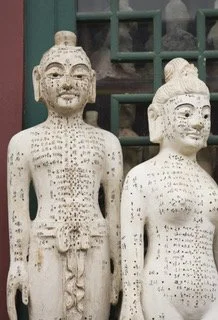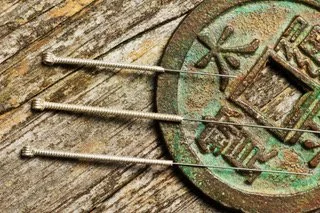SERVICES
What is Acupuncture and Chinese Medicine?
Acupuncture is a complex branch of ancient Chinese medicine, but its practical principles and methods are easily understood:
#1 - Fourteen major energy channels called meridians course through the human body including the head, arms, hands, legs, feet, torso, and internal organs.
#2 - A subtle energy called Chi (pronounced chee) circulates via the meridians to all parts of the body, even the most remote cells.
#3 - Chi is the vital force, the presence of which separates the living from the dead. Its balanced, unimpeded flow is critical to sound health.
#4- Any misdirection, blockage, or other derangement of the amount, flow, or balance of Chi may result in pain, dysfunction, and ill health.
#5 - With acupuncture needles, or other means, the acupuncturist stimulates certain points (acupoints) along the course of the meridians. Such stimulation helps restore the normal balance and flow of Chi so organs and bodily systems can work together in harmony as intended. This sets the stage for the body to repair itself and maintain its own health.
Acupuncture - What does it treat?
The World Health Organization recognizes acupuncture and Oriental medicine as effective for over 43 common ailments including:
-
Sinusitis, rhinitis, common cold, tonsillitis, sore throat, hay fever, bronchitis, bronchial asthma
-
Anxiety, depression, stress, insomnia, weight control
-
Premenstrual syndrome (PMS) Irregular Menses, menstrual cramps, pelvic inflammatory disease (PID), menopausal symptoms, morning sickness, urinary incontinence
-
Frozen shoulder, tennis elbow, low back pain, osteoarthritis and joint pains, stiff neck, tendinitis, bursitis, sprains, injuries from auto accidents, chronic fatigue syndrome, fibromyalgia
-
Acute and chronic gastritis, hyperacidity, acute uncomplicated duodenal ulcer, chronic duodenal ulcer (pain relief), acute and chronic colitis, acute bacillary dysentery, constipation, diarrhea, paralytic ileus
-
Headache and Migraine, dizziness, trigeminal neuralgia, facial palsy (within 3-6 months), paresis following stroke, peripheral neuropathies, meniere’s disease, neurogenic bladder dysfunction, nocturnal enuresis, intercostal neuralgia, sciatica
-
Toothache, post extraction pain, gingivitis, acute and chronic pharyngitis
-
Ringing in ears, deafness, earache
-
Acute conjunctivitis, myopia in children, cataracts without complications, central retinitis
What are needle treatments like? Are they painful?
Patients who have received inoculations or other medical injections from a hypodermic needle are sometimes fearful that acupuncture treatments will be as painful; but such is not the case.
Typically, acupuncture needles are fine and flexible, no bigger around than a human hair or piece of thread. Deftly inserted into an acupoint by a skilled acupuncturist, the slender needle produces little or no sensation at all. When the needle makes contact with Chi, the energy, some patients experience a slight tingling sensation. First-time patients are usually amazed at how comfortable they are during treatment.


